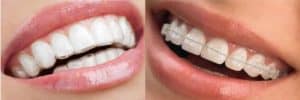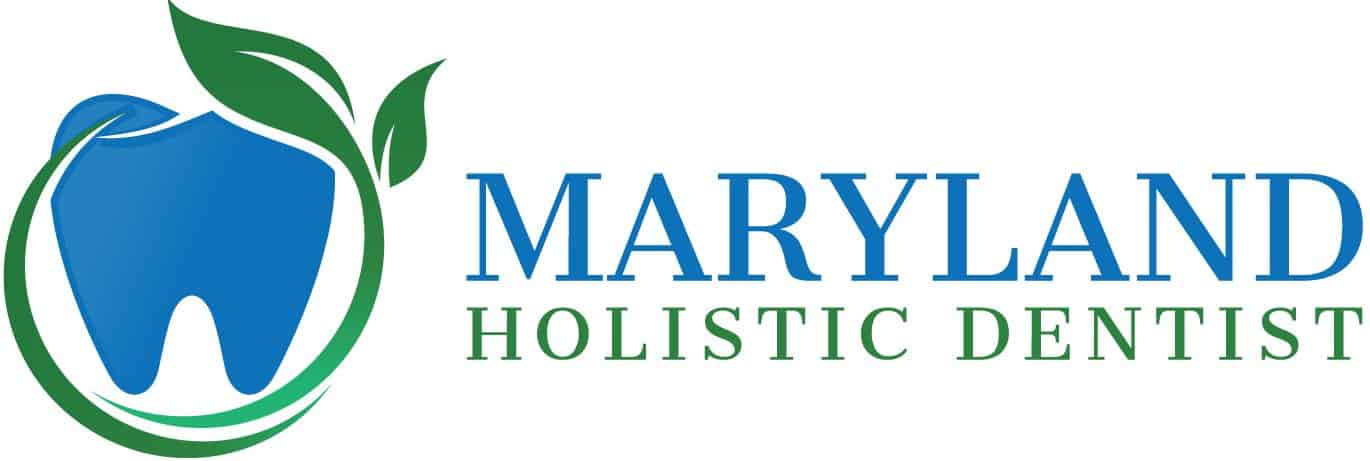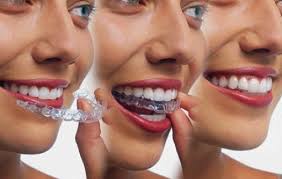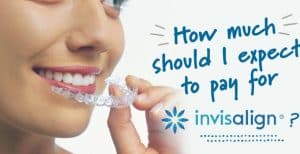Invisalign clear braces are an increasingly popular orthodontic treatment that provides a discreet and comfortable way to straighten teeth and correct bite and mouth breathing problems. If you’re considering Invisalign, you probably have a lot of questions about how it works, how much it costs, and whether it’s the right choice for you.
In this post, we’ll answer all your questions about Invisalign, from how it works to how much it costs and everything in between. We’ll also discuss how Invisalign can be used to address mouth breathing, a common condition that can cause a range of health problems.
What is Invisalign?
Invisalign is an orthodontic treatment that uses clear plastic aligners to gradually move teeth into their correct positions. The aligners are custom-made for each patient and are worn for 22 hours a day, with each set of aligners worn for about two weeks before being replaced with the next set in the series.
Invisalign aligners are nearly invisible, comfortable to wear, and can be removed for eating, brushing, and flossing. Unlike traditional metal braces, there are no metal brackets or wires to irritate the mouth, and there are no restrictions on what you can eat.
Is Invisalign the same as Clear Braces?

Invisalign and clear braces are not the same thing, although they both offer a more discreet alternative to traditional metal braces. Clear braces use clear or tooth-colored brackets and wires to move teeth, while Invisalign uses clear plastic aligners. While clear braces can be an effective option, Invisalign is often preferred for its comfort, convenience, and nearly invisible appearance. Invisalign is removable and does not involve a wire or bonded orthodontic brackets and bands.
Are Clear Braces faster than Invisalign?
The length of treatment time for clear braces versus Invisalign will depend on the patient’s individual needs and the complexity of their case. In general, Invisalign can take about the same amount of time as traditional braces to achieve the desired results. However, Invisalign can often be faster than clear braces since there are fewer adjustments needed with clear aligners.
Which is Cheaper – Braces or Invisalign?
The cost of Invisalign and traditional braces can vary depending on the patient’s individual needs and the complexity of their case. In general, Invisalign can be slightly more expensive than traditional braces. Invisalign costs can be $4500 – $9000. The cost of conventional braces is $4000 – $7500. However, the cost difference is often offset by the convenience and comfort of Invisalign. Invisalign can also be used for palatal expansion whereas braces are very limited when it comes to expansion.
Can Invisalign Correct Reverse Lower Jaw Position?
Reverse lower jaw position and mouth breather face can be fixed with different orthodontic appliances including Invisalign clear aligners. Some of the other appliances include Schwarz (for kids) and Vivos DNA and Homeoblock appliances (for adults). Moving the lower jaw forward is very important in correcting problems such as mouth breathing and sleep apnea. Mouth breathers have a very unique poor facial profile called mouth breather face.
Does Invisalign work as well as braces?
Invisalign can be just as effective as traditional braces for correcting a range of orthodontic issues, including crowded teeth, gaps, overbites, underbites, and crossbites. However, the success of Invisalign treatment will depend on the patient’s compliance with wearing the aligners for at least 22 hours a day.
Can Invisalign fix Mouth Breathing Face?
Invisalign is the orthodontists best friend in straightening teeth, but, Invisalign can also be used to treat mouth breathing, TMJ and some cases of sleep apnea. There are new programs in Invisalign system that can straighten teeth and expand the mouth and jaws at the same time. Expanders create more room in the mouth and nose so the airway spaces are more open for breathing. This naturally helps with nasal breathing and decreases airway resistance and the need for mouth breathing.
What is the failure rate of Invisalign?
The failure rate of Invisalign is very low, with the majority of patients achieving their desired results. However, Invisalign can be less effective in cases with more severe bite problems or when teeth need to be rotated more than 20 degrees. In such cases, traditional braces may be a better option.
What are the cons of Invisalign?
While Invisalign offers many benefits, there are some cons to consider. One of the main drawbacks of Invisalign is that it can be more expensive than traditional braces. Additionally, since the clear aligners are removable, patients must be diligent about wearing them for at least 22 hours a day. Some patients may also experience temporary discomfort or soreness when starting a new set of aligners.
In what cases will Invisalign not work?
While Invisalign can be effective for many patients, there are some cases where it may not be the best option. Invisalign may not work for patients with advanced occlusal problems or who have severe crooked and crowded teeth. Additionally, patients who have bridgework, back teeth that need to be moved, or teeth with deep roots may not be good candidates for Invisalign.
Do you ever stop wearing Invisalign?
Patients should continue wearing Invisalign aligners as directed by their orthodontist until their treatment is complete. While some patients may see results in as little as six months, treatment can take up to two years for more complex cases. Patients should only stop wearing their aligners when their orthodontist advises them to do so.
What is the problem with Invisalign?
One potential problem with Invisalign is that it requires patients to wear their aligners for at least 22 hours a day. This can be challenging for some patients who may forget to wear their aligners or may have trouble fitting them into their daily routine. Additionally, while Invisalign can be very effective for many patients, it may not be the best option for those with severe bite problems or complex dental issues.
Do you sleep with Invisalign?
Yes, patients should wear their Invisalign aligners for at least 22 hours a day, including while sleeping. This ensures that the teeth are being moved into their correct positions consistently and efficiently. The trays apply moderate pressure in the direction the teeth need to move. The pressure needs to be applied for a period of time or the teeth will not move properly and subsequent trays will not fit properly.
Do teeth move back after Invisalign?
After completing Invisalign treatment, patients will be given a retainer to wear to prevent their teeth from moving back to their original positions. However, if the patient does not wear their retainer as directed, their teeth may shift back over time. The goal is to move the teeth into a stable position where the teeth do not move. It is not possible for all orthodontic cases to achieve a stable result and wearing a retainer is advisable if minor teeth shifting is not desirable.
What happens if you don’t wear Invisalign 22 hours a day?
In order for Invisalign treatment to be effective, patients should wear their aligners for at least 22 hours a day. If a patient does not wear their aligners for this amount of time, their treatment may take longer than expected or may not be effective at all. Specifically the trays will stop fitting after a few new trays are inserted because the prior trays have not been worn long enough to full move the teeth.
Do you need to wear a retainer forever?
After completing Invisalign treatment, patients will need to wear a retainer to prevent their teeth from shifting back to their original positions. While the amount of time a patient needs to wear their retainer may vary, most patients will need to wear their retainer indefinitely to maintain their results. If some teeth settling is acceptable, sometimes not wearing a retainer can be considerable.
Do they smooth teeth after Invisalign?
After completing Invisalign treatment, orthodontists may use a process called dental contouring to smooth any rough edges or uneven surfaces on the teeth. This can help improve the appearance and comfort of the teeth. This may be necessary when the wear patterns of the teeth in the new positions do not fit as well as in the original teeth positions. The smoothing is called a bite adjustment. An adjustment can be functional or cosmetic.
Can I get a permanent retainer after Invisalign?
While permanent retainers can be a good option for some patients, they may not be necessary for everyone. Patients should discuss their options with their orthodontist to determine the best course of action for maintaining their results. Fixed retainers make it impossible to floss and can increase risk for cavities and gum disease.
What is the final stage of Invisalign?
The final stage of Invisalign treatment involves wearing a retainer to maintain the results achieved by the aligners. Patients will typically wear their retainer at night for an indefinite period of time.
What is the bar behind your teeth after Invisalign?
The bar behind the teeth, also known as a lingual bar, is a wire that is attached to the back of the teeth after Invisalign treatment to help maintain the results. The bar is typically not visible when the patient smiles or speaks. A lingual bar is not always necessary unless the final teeth positions are quite unstable.
What to do if your teeth shift after Invisalign?
If a patient’s teeth shift after Invisalign treatment, they should contact their orthodontist as soon as possible. In some cases, the patient may need further treatment to correct the issue, such as wearing a new set of aligners or using a retainer.
Conclusion:
Invisalign clear braces offer a convenient, comfortable, and nearly invisible way to straighten teeth and correct bite problems. While it may not be the best option for everyone, Invisalign can be an effective orthodontic treatment for many patients. By wearing the aligners for at least 22 hours a day and following their orthodontist’s instructions, patients can achieve the straight, healthy smile they’ve always wanted.
In addition to its cosmetic benefits, Invisalign can also be used to address mouth breathing, a common condition that can lead to a range of health problems. By gradually moving the teeth and creating more space in the mouth for the tongue, Invisalign can help patients breathe more easily and reduce their risk of health complications. Invisalign can be especially be effective in correcting mouth breathing when combined with myofunctional therapy and tongue tie release.
If you’re interested in Invisalign treatment, give us a call at Maryland Holistic Dentist to schedule a no cost consultation with Dr. Adams. With its many benefits, Invisalign can help you achieve the smile you’ve always wanted while improving your overall oral health and well-being.


